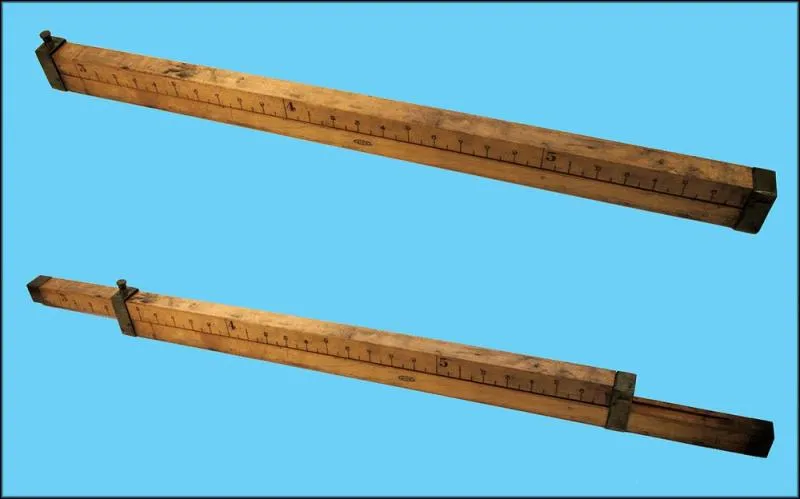Featured Artifact
Every tool used by U.S. Customs had a name and specific purpose. But that history was sometimes lost over time. This artifact was a mystery. It was clearly a gauge of some kind. But there were no pictures of it in old Customs manuals, and an online search showed that other historical collections didn’t have a name for it, either.
Finding the name and purpose began with careful study of the artifact. Two squared rods are side-by-side. One rod slides against the other, and is locked in place by a clamp. The scales on each rod are marked at 3, 4, and 5 feet, with these main segments further divided by ten. The rods extend to 5-9.
In examining the tool, it became clear that this measures something from the inside. The age of the tool pre-dates shipping containers. So, the logical conclusion is that it was probably used in ships’ holds. This was the vital clue that led to a search of ship manuals. And there it was: a Moorsom’s Stanchion. Now armed with a name, going back to Customs manuals proved that it was used in the interior of vessels to measure tonnage (cargo capacity).

The printed description and illustration are from Instructions and Regulations Relating to the Measurement of Ships and Tonnage Under the Merchant Shipping Acts, 1894-1906, printed in London in 1907, and digitized by Google.
MOORSOM’S STANCHION/SLIDING RODS GAUGE
Object ID# 2014.45.1
Two 36-inch rods, about 1-1/4” square each, one fixed and one sliding along the other
Wood with brass fittings
Manufactured by Kerby & Bros. Makers, S. Fulton St., New York

